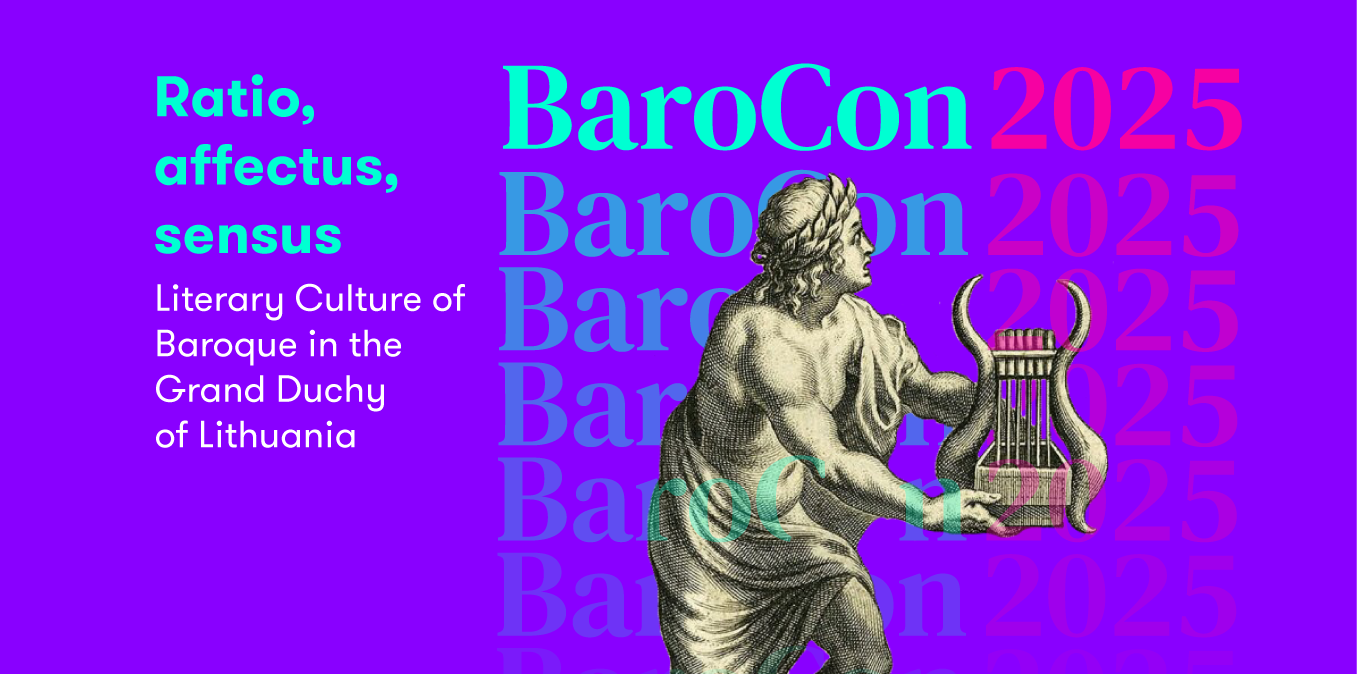Ratio, affectus, sensus: Literary Culture of the Baroque in the Grand Duchy of Lithuania
In 2025, we will commemorate the 400th anniversary of the first publication of Matheus Casimirus Sarbievius' most famous Latin poetry collection 'Lyricorum libri tres' (1625). This has led to 2025 being declared the Year of Baroque Literature in Lithuania. The eminent Jesuit neo-Latin poet of the Polish-Lithuanian Commonwealth, Sarbievius, has been hailed as the Christian Horace and the Sarmatian Horace. His theoretical thoughts on poetry and rhetoric are still highly regarded and have inspired new research on other concurrent themes and authors. This anniversary provides an opportunity to explore the extent and diversity of Baroque literary culture, which has seen a surge of interest in recent decades, both in the academic world and in popular culture. Therefore, the Institute of Lithuanian Literature and Folklore, together with the Faculty of Philology of Vilnius University, is organising an international academic conference "Ratio, affectus, sensus: Literary Culture of the Baroque in the Grand Duchy of Lithuania" on 25-27 September 2025 in the baroque city of Vilnius.
The aim of the multidisciplinary conference is to stimulate discussion on the literary culture of the "long seventeenth century" (from the end of the 16th century to the middle of the 18th century) in the Grand Duchy of Lithuania. This historical period, associated with dramatic changes and a general cultural crisis, is often described in contradictory terms and in constant tension between reason and senses, rigid structure and passions, classifications and impressions, etc. By embracing this contradiction, we invite an exploration of the theme in question through the lens of this dynamic interplay between reason (ratio), emotion (affectus) and the senses (sensus), which can be perceived in various genres of the period, such as poetry, biography, hagiography, rhetoric, private and public correspondence, and so on. The importance of the modern approach lies not only in what it can reveal about the Baroque in the Grand Duchy of Lithuania, but also about subsequent and contemporary literary culture, as scholars have demonstrated the continuing influence of a 'Baroque spirit'.
Event location
25–26 September the conference will take place at V. Krėvė (118) auditorium, Faculty of Philology
27 September the conference will take place at the Church Heritage Museum, Šv. Mykolo g. 9 (entrance from Maironio g. "Arkangelo konferencijų centras")
Keynote speakers

Ona Dilytė-Čiurinskienė
Senior Researcher, The Institute of Lithuanian Literature and Folklore
Prof Stephen Harrison
Professor of Latin literature, University of Oxford
Viltė Stukaitė
Witnessing the Miracle: the Genesis and Nature of the Early Greek and Roman Rite Catholic Miracle Books
Viltė Stukaitė
Vilnius University
Witnessing the Miracle: the Genesis and Nature of the Early Greek and Roman Rite Catholic Miracle Books
Keywords: religious literature of the Grand Duchy of Lithuania, the icon of Our Lady of Zyrowicz, the image of Our Lady of Trakai, miracles, miracles books
The images of the Virgin Mary, situated within the broader context of other religious cult objects of the Grand Duchy of Lithuania, are distinguished by their abundance, canonicity of their forms, and their devotional significance. These sacred images reveal a unique cultural and religious environment shaped by the contact between the Eastern and Western churches in the Grand Duchy of Lithuania. Venerated by both the Catholic and Orthodox communities, these icons occupied a profound place in the devotional life of the region. In the early 17th century, the development of the practice of veneration of the Virgin Mary contributed to the emergence of the miracle books – printed compilations documenting miraculous events attributed to specific cultic images. These texts served both to affirm the sanctity of particular icons and to promote pilgrimage to associated sanctuaries. The information about the history of the sanctuary, the people who experienced miracles, their number, social status, and religious affiliation, recorded in the miracle books, not only testifies to the history of the place of worship, the practices of devotion to the Virgin Mary by the faithful who belonged to different religious communities, but also provides a deeper insight into the daily life of the faithful in a particular place, as well as the diseases and afflictions that accompanied them. The presentation aims to reveal the genesis and nature of the earliest known miracle books of Zyrowicz and Trakai, as well as to compare the universality and differences of the religious practices recorded in them. Through a comparative analysis of the testimonies, recorded in the Roman Catholic miracle book Kościół Farski Trocki Cudami Przenaświetszey Bogarodzice P. Maryey obiaśniony... (1645) and the Greek Catholic miracle books Historia abo powieść zgodliwa… (1622, 1629), the presentation aims to examine the prevalence of the veneration practices associated with the images of Our Lady of Zyrowicz and Trakai among Catholic and Orthodox communities of the period.


